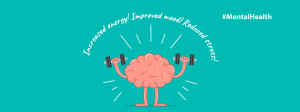How Staying Active Can Improve Quality of Life as You Get Older
by: Jayson Kottunjalil
While aging is a natural process, it doesn’t mean that we have to accept a decline in our quality of life. In fact, staying active through regular exercise can be one of the most powerful tools for maintaining physical and mental well-being as we grow older.
Physical Benefits of Exercise
Engaging in regular physical activity offers numerous benefits. It helps maintain muscle strength and flexibility, which are essential for performing everyday tasks. Exercise also supports bone health, reducing the risk of osteoporosis and fractures. Cardiovascular activities like walking, swimming, or cycling can improve heart health, lower blood pressure, and reduce the risk of chronic diseases such as diabetes. According to the National Institute on Aging (NIA), regular physical activity can reduce the risk of developing chronic diseases and improve overall health in older adults. (National Institute on Aging, 2020)
Enhancing Mental Well-being
In addition to its physical benefits, exercise plays a crucial role in helping mental health and cognitive function as we age. Studies have shown that consistent physical activity can ease symptoms of depression and anxiety, improve mood, and sharpen cognitive functions like memory and focus. Engaging in group exercise classes or outdoor activities can also provide opportunities for social interaction and reduce feelings of loneliness or isolation. According to a study published in the Journal of Aging and Physical Activity, participating in regular exercise programs among older adults was associated with improvements in mood and overall well-being. (McAuley et al., 2006)
Tips for Starting an Exercise Routine
- Determine your motivation to start exercising and understand your reasons for doing so.
- Identify personal health goals such as disease risk reduction, improved heart health, weight loss, better sleep, or maintaining physical abilities.
- Consider factors like enjoying outdoor activities, or continuing sports interests.
- Clarify your “why” to stay committed and motivated during challenging times.
- Set achievable fitness goals that are measurable and realistic.
- Start with small, attainable objectives and gradually progress to more challenging ones.
- Avoid pushing yourself too hard too quickly to prevent discouragement.
- Focus on consistency and gradual improvement over time.
- Establish a personalized exercise routine that suits your lifestyle and goals.
- Choose activities that you enjoy and align with your current physical abilities.
- Incorporate a mix of cardiovascular, strength training, flexibility, and core exercises.
- Plan workout sessions around your schedule
- Monitor fitness progress through regular physical assessments and measurements.
- Assess aerobic fitness, muscular strength and endurance, flexibility, and body composition.
- Utilize fitness tech such as wearable trackers and apps for convenient progress tracking.
- Embrace exercise as a long-term lifestyle commitment rather than a short-term endeavor.
- View fitness as a lifelong journey with ups and downs.
- Adjust your routine and goals as needed while staying focused on your overarching motivation.
(Nebraska Medicine, 2023)
Regular exercise offers numerous benefits as well as physical health. It triggers the release of endorphins, which alleviate stress, anxiety, and depression, while enhancing cognitive function and memory. It also helps with social connections and a sense of belonging, particularly through group activities. By prioritizing exercise, we lead by example, inspiring others to adopt healthier lifestyles and creating a ripple effect of wellness within our communities.
References
McAuley, E., Konopack, J., Motl, R., Morris, K., Doerksen, S., & Rosengren, K. (2006). Physical activity and quality of life in older adults: influence of health status and self-efficacy. Annals of Behavioral Medicine, 99-103. lbhttps://academic.oup.com/abm/article/31/1/99/4631747?login=false
National Institute on Aging. (2020, April 3). Exercising With Chronic Conditions | National Institute on Aging. National Institute on Aging. Retrieved February 23, 2024, from https://www.nia.nih.gov/health/exercise-and-physical-activity/exercising-chronic-conditions
Nebraska Medicine. (2023, March 21). How to start a simple exercise routine: 5 tips for beginners. Nebraska Medicine. Retrieved February 24, 2024, from https://www.nebraskamed.com/health/body-systems/how-to-start-a-simple-exercise-routine-5-tips-for-beginners

